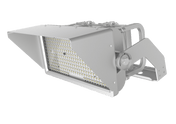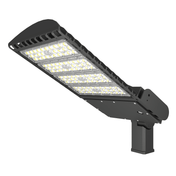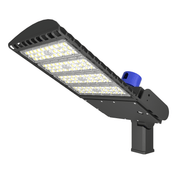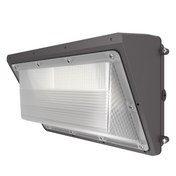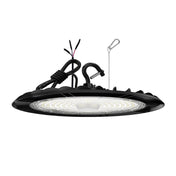From high-definition broadcasts of professional sports to amateur matches on community courts, lighting is no longer merely a secondary feature of the sports arena—it is a core element that determines the fairness of competition, athlete performance, and spectator experience. Traditional sports lighting has long been plagued by issues such as high energy consumption, insufficient light efficiency, and tedious maintenance. However, the emergence of LED sports lights is ushering in a quiet revolution. As practitioners deeply engaged in the cross-border market, we have witnessed how this product, through technological breakthroughs, has conquered stadiums across diverse climates and tournament levels worldwide. From professional baseball stadiums in North America to community basketball courts in Southeast Asia, it has become a lighting solution that transcends geographies and scenarios. This article will provide an in-depth analysis of the technical core, adaptability, global market landscape, and cross-border operational strategies of LED sports lights, providing a comprehensive reference for industry partners.
The Technological Transformation of Sports Lighting: From "Illumination" to "Precise Empowerment"
The essence of sports lighting is to achieve three core goals through lighting environment design: ensuring sports safety (glare-free, flicker-free), ensuring fair competition (uniform illumination, true color), and enhancing the viewing experience (adapting to broadcast requirements). The maturity of LED technology has made these goals a reality. Its core advantages are reflected in collaborative innovation across six technical dimensions:
1. Light Source Technology: From "Brightness Competition" to "Precise Light Distribution"
Traditional metal halide lamps rely on extensive illumination, while LED sports lights utilize a combination of COB integrated chips and customized optical lenses, achieving a qualitative shift in lighting precision:
High luminous efficacy and energy density: Utilizing top-tier chips from Sanan Optoelectronics and Epistar Optoelectronics, they achieve luminous efficacy of 140-180 lm/W, over 60% higher than metal halide lamps. Taking a standard football field as an example, 200 200W LED lights can replace 400 400W metal halide lamps, saving over 150,000 kWh of electricity annually.
Wide Color Temperature and High Color Rendering: Supports adjustable color temperatures from 3000K to 6500K to meet the needs of different sports. Warm white light (3000K) is suitable for indoor badminton courts to enhance the sense of warmth, while cool white light (5700K) enhances visual clarity on football fields. With a color rendering index (CRI) > 90, it accurately reproduces sportswear colors and field markings, preventing misjudgments.
Customizable Beam Angle: Utilizing an aspheric lens design, it achieves full beam angle coverage from 15° to 120°. For example, a tennis court requires a narrow 30° beam focused on the center of the field, while a multi-purpose gymnasium uses a wide 90° beam to accommodate various scenarios, such as basketball and volleyball.
2. Cooling System: Ensuring Stability in Extreme Environments
Sports venues are often located outdoors or in high-humidity environments. The operating temperature of LED chips directly determines their lifespan and light decay. High-end LED sports lights utilize a three-dimensional heat dissipation architecture:
Aerospace aluminum fin matrix: Fin spacing and angles are optimized through computational fluid dynamics (CFD), increasing the heat dissipation area by 40% compared to traditional lamps and reducing thermal resistance to as low as 0.8°C/W.
Vapor Plate Technology: High-power models (over 400W) feature an integrated vacuum vapor chamber to quickly transfer heat from the chip to the heat sink, ensuring a junction temperature of ≤75°C, far below the industry average of 95°C.
Intelligent Temperature Control: A built-in NTC temperature sensor automatically reduces power by 5% when the ambient temperature exceeds 55°C, preventing failure due to high temperatures. This design allows the light to withstand both the scorching 45°C heat of the Middle East and the freezing -20°C temperatures of Northern Europe.
3. Protection: Defending against both natural and man-made challenges
The complex environments of sports venues place extreme demands on the durability of their lighting fixtures:
IP66+IK10 protection combination: The fully sealed structure withstands heavy rain and dust, and has passed a 10J impact test (equivalent to a 10kg object dropped from a height of 20cm). It performs reliably in potentially impactful environments, such as basketball arenas.
Corrosion-resistant coating: The model specifically designed for coastal venues features a three-layer ceramic coating and has passed a 5,000-hour salt spray test, making it suitable for corrosive environments such as Southeast Asian islands and Middle Eastern deserts.
Lightning protection: A built-in 6KV surge protector reduces the risk of lightning damage by 90% in areas prone to thunderstorms, such as Brazil and India.
4. Intelligent Control System: From "Passive Lighting" to "Dynamic Response"
Modern sports venues require lighting systems that are deeply integrated with the event flow. The intelligent module for LED sports lights achieves four key breakthroughs:
0-10V/DALI Dimming: Supports stepless dimming from 1% to 100%, saving energy by using 50% brightness during pre-match warm-ups and instantly switching to 100% illumination at the start of the event. Response time is less than 0.1 seconds.
Scene Mode Presets: 8-16 scene modes, such as "Football Match Mode," "Training Mode," and "Broadcast Mode," can be stored via the DMX512 protocol, allowing for one-touch switching without repeated debugging.
Microwave Sensing and Daylight Complementarity: Outdoor venues integrate dual light and microwave detection, automatically reducing power during the day and brightening the area when people approach the training area, resulting in overall energy savings of over 30%. Remote Monitoring and Fault Warning: Connecting to a cloud platform via a LoRa/WiFi module allows real-time monitoring of each lamp's operating status (voltage, temperature, and luminous flux), providing early warning of potential failures and reducing maintenance costs by 40%.
5. Structural Design: Adaptable to Global Installation Scenarios
Cross-border products must adapt to installation conditions in diverse regions. LED sports lights offer a high degree of structural adaptability:
Multiple Mounting Options: Supports pole, wall, and suspension (cable/pole) installation. Accessories are compatible with both imperial (1/2") and metric (M20) interfaces, meeting the needs of European and American markets without additional modification.
Lightweight and Modular: A single lamp weighs 30% less than traditional fixtures (e.g., approximately 5kg for a 200W model), reducing installation load requirements. The separate power supply and light source modules allow for split packaging during cross-border shipping, saving shipping costs. On-site component replacement takes only 15 minutes.
Optimized Wind Resistance: Outdoor models have passed wind tunnel testing and can withstand a force 12 typhoon (32.7m/s wind speed), demonstrating reliable performance in open-air venues in coastal areas such as Florida, USA, and Taiwan, China.
6. Certification and Compliance: Breaking Down Global Trade Barriers
The key to cross-border sales lies in meeting target market standards and ensuring high quality. LED sports lights must pass multiple international certifications:
Safety certifications: UL (US), CE (EU), SAA (Australia), PSE (Japan), and KC (Korea). UL1598 certification requires rigorous fire and electrical safety testing.
Energy efficiency certifications: Complying with the EU ERP Directive (energy efficiency rating A++), US Energy Star (Lightspec standard), and Australian MEPS requirements can provide additional points in bidding projects.
Photobiological safety: IEC 62471 certification ensures no blue light hazards (RG0 rating), preventing visual damage from prolonged exposure to athletes.
Scenario-based solutions: Comprehensive coverage from professional sports to community sports
Different sports have significantly different lighting requirements. Through parameter customization and system design, LED sports lighting achieves precise adaptation for everything from top-tier events to mass fitness settings.
1. Professional Tournament-Level Solution (Class I Venues)
Professional leagues and international competitions (such as the World Cup and NBA) have stringent lighting requirements, requiring them to meet the dual standards of high-definition broadcasting (4K/8K) and athletic performance.
Soccer Fields:
Illumination Requirements: Vertical illuminance ≥ 2000 lux (broadcast direction), horizontal illuminance ≥ 1500 lux, uniformity > 0.7.
Special Design: Utilizes 1200W high-power LED lamps with 90° beam angle lenses for full field coverage. Cross-lighting across multiple lamp groups eliminates shadows, meeting FIFA (International Football Federation) Class I venue standards.
Case Study: The Rio de Janeiro Olympic Stadium renovation project, Brazil, replaced traditional metal halide lamps with 280 800W LED sports lights, saving 65% energy and improving broadcast color reproduction by 40%.
Basketball Court (Indoor):
Illumination Requirements: Vertical illuminance ≥ 1000 lux (TV broadcast area), glare value (UGR) < 19.
Special Design: Anti-glare grilles (cutoff angle > 45°) are used to prevent direct light from hitting athletes' eyes; color temperature of 5000K and CRI > 95 ensure clear visibility of jersey numbers and referee hand signals.
Case Study: The Los Angeles Clippers' training facility in the United States uses an intelligent control system to quickly switch between "game-training-media interview" modes, saving 82,000 kWh of electricity annually.
2. Amateur Competition-Level Solution (Class II Venue)
Designed for regional leagues, school stadiums, and other scenarios, this solution ensures fair play while balancing cost and performance:
Tennis Court:
Illumination Requirements: Horizontal illuminance 300-500 lux, uniformity >0.6, no flicker (frequency >3125Hz).
Special Design: Utilizes 400W LED lights with a narrow 15° beam focused on the court area to prevent light spillage and disturbing surrounding residents. Supports light sensor control for automatic lighting at dusk.
Advantages: Reduces light pollution by 30% compared to traditional metal halide lamps and has been widely acclaimed in community court projects across Europe.
Badminton Hall:
Illumination Requirements: Vertical illuminance 500 lux (net area), uniformity >0.8, no glare (UGR <16).
Special Design: Utilizes 200W low-voltage LED lights (AC 24V) to reduce the risk of electric shock during high-altitude installation; the lighting layout is parallel to the net to prevent reflections from the ball from interfering with visual perception.
Adaptability: The modular design supports phased renovations, making it suitable for schools and community centers with limited budgets.
3. Public Fitness Solution (Class III Venues)
For leisure and sports spaces such as parks and residential communities, this solution prioritizes energy efficiency, durability, and ease of maintenance:
Multi-purpose Sports Field:
Illumination Requirements: Horizontal illumination of 150-300 lux, meeting the needs of various scenarios such as square dancing, jogging, and children's play.
Special Design: Utilizes dual power supply via solar and mains (suitable for areas without grid access); IP66 protection and IK08 impact resistance ensure compatibility with complex outdoor environments.
Cost Advantage: 50W low-power models consume only 0.12 kWh per lamp per day, have a lifespan of over 10 years, and require virtually no maintenance.
Pool Lighting:
Special Requirements: Corrosion resistance (salt spray grade C5-M), UV resistance, and a color temperature of 4000K for enhanced underwater visibility.
Solution: LED lights with all-stainless steel housings, installed with underwater embedded components, have proven reliable in Southeast Asian resort pool projects.
Global Market Landscape and Cross-Border Opportunities: Targeted Strategies Amidst Differentiated Demand
The global market for LED sports lighting exhibits a triple growth logic driven by technology, policy, and application scenarios. The demand characteristics of different regional markets provide differentiated entry opportunities for cross-border companies.
1. Market Size and Growth Drivers
Global Size: According to Grand View Research, the global sports lighting market will reach US$4.8 billion in 2023, with LED products accounting for over 75%. The market is expected to grow at a compound annual growth rate of 6.8% to US$7 billion by 2028.
Core Drivers:
Policy: Carbon neutrality targets across the globe are driving energy-saving renovations in sports venues (for example, the EU's "Buildings Energy Efficiency Directive" requires all public venues to convert to LEDs by 2030).
Demand: The global growth of the fitness population (reaching 2.1 billion in 2023) is driving the expansion of community sports facilities, while the widespread adoption of 4K broadcasting technology is forcing lighting upgrades in professional stadiums.
Technology: LED costs have dropped 60% since 2015, making them more cost-effective than traditional lighting.
2. Regional Market Characteristics and Strategies
North American Market:
Demand Characteristics: Emphasis on certification and compliance (UL and DLC certifications are essential), intelligent control systems (compatibility with platforms like Amazon Alexa is required), and a preference for modular products for easy future upgrades.
Major Customers: Professional sports leagues (NBA, MLB), the National Collegiate Athletic Association (NCAA), and municipal park systems.
Breakthrough Strategy: Partner with local contractors to participate in government tenders and provide a warranty of at least five years (the average warranty period in North America is three years).
European Market:
Demand Characteristics: Stringent energy efficiency requirements (ERP A++ is the entry standard), aesthetic design (luminaires must blend in with the architectural style), and strict light pollution control.
Major Customers: Football clubs (Premier League, Bundesliga), community councils, and leisure centers.
Breakthrough Strategy: After obtaining CE certification, focus on emerging markets in Eastern Europe (Poland and Hungary), which are rapidly replacing outdated Soviet-era lighting systems.
Southeast Asian Market:
Demand Characteristics: Price sensitivity (preferring mid-range and low-end products under $300), high temperature and humidity resistance (IP66 is a minimum requirement), and an emphasis on fast delivery.
Major Customers: Government sports facility projects (such as the New Capital Sports Center in Indonesia) and private fitness centers.
Breakthrough Strategy: Establish overseas warehouses in Vietnam and Malaysia to shorten delivery times and provide localized installation instruction videos.
Middle East Market:
Demand Characteristics: Extreme environmental adaptability (50°C heat resistance, sandstorm resistance), luxury positioning (high brightness, intelligent control), short procurement cycles but large quantities.
Main Customers: Royal sports clubs, hotels and resorts.
Breakthrough Strategy: Obtain SASO certification and collaborate with local building materials distributors to participate in supporting projects for the 2024 Qatar Asian Cup and the 2026 Saudi Arabia World Cup.
3. Key Success Factors for Cross-Border Operations
Product Customization: Adjust core parameters for different markets (e.g., North American voltage 120V/277V, European 230V, Middle Eastern 220V), and provide multi-language packaging and manuals (English, Spanish, Arabic, etc.).
Supply Chain Optimization: Adopt a "domestic production of core components + local assembly" model (e.g., establishing an assembly plant in Mexico to serve North America to circumvent tariff barriers), reducing delivery times to less than 15 days. Channel Portfolio: Reach small and medium-sized customers online through Amazon Business and Alibaba International Station, and connect with contractors offline at industry exhibitions such as Light + Building in Munich, Germany, and the LED Show in the United States.
Localized Service: Establish technical support hotlines in target markets to provide remote commissioning services, and sign partnership agreements with local repair vendors to ensure a 48-hour response to after-sales needs.
Future Trends: New Forms of Sports Lighting Driven by Technological Convergence
LED sports lights are evolving from a single lighting tool to a "lighting environment solution." Three major technological trends will reshape the industry landscape:
1. Intelligent Connectivity and Digitalization
IoT Integration: Built-in sensors in lighting fixtures collect venue utilization and lighting data, and AI algorithms are used to optimize lighting strategies (e.g., automatically adjusting brightness based on historical data to predict peak traffic).
Broadcast Collaboration: Real-time collaboration with the broadcast system automatically adjusts lighting angles based on camera position to eliminate glare. (This technology was piloted at the 2023 FIBA World Cup.)
2. Green Energy Integration
Photovoltaic Complementary Systems: Promoting the integrated "LED lighting + solar panels + energy storage battery" solution in regions with abundant sunlight (such as the Middle East and Australia) to enable off-grid operation.
Energy Recovery: Converting heat dissipated by lamps into electricity (thermoelectric power generation technology) to power low-power devices such as sensors, further improving energy efficiency.
3. Deepening Healthy Lighting
Dynamic Spectrum Adjustment: Simulating the changing patterns of natural light, using a high proportion of blue light to enhance alertness during training and a low proportion of blue light to promote relaxation during post-game recovery.
Vision Protection Enhancements: Nano-coating technology eliminates 99% of harmful blue light, creating a differentiated competitive advantage in youth sports venues.
Conclusion: Connecting Sports Enthusiasts Globally with Light
The value of LED sports lights goes far beyond simply replacing traditional lighting. They are the "bringers of light" that bring nighttime matches to rural football fields in Africa, the "energy-saving pioneers" that enable community football fields in Southeast Asia to operate at zero electricity costs, and the "technical foundation" that enhances the clarity of broadcasts of professional sports in North America. In the tide of cross-border trade, the key to success lies in understanding the "lighting needs" of different markets: telling a compelling "energy efficiency story" for European customers, showcasing a "smart experience" for North American customers, and calculating the "costs" for Southeast Asian customers.
When an LED sports light illuminates a beach soccer field in Brazil, it illuminates not only a football match but also the green future of the global sports industry. As a cross-border trade provider, our mission is to bring this "light innovation" to every sports venue around the world, transforming technological breakthroughs into the joy of sports that transcends borders.


